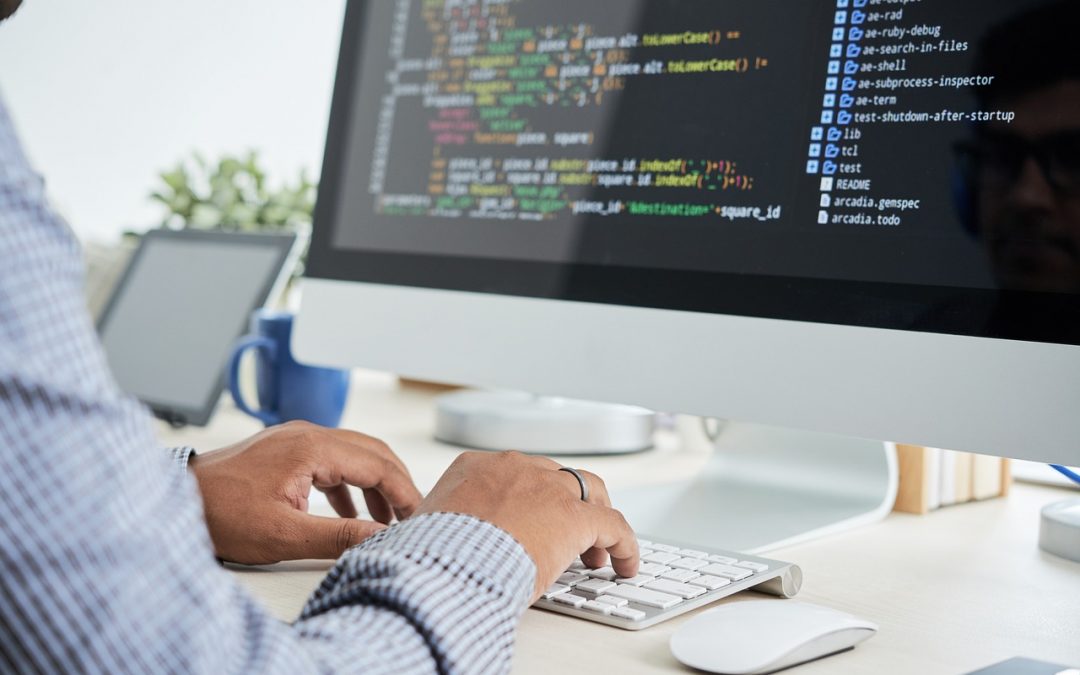Every year, on the second Tuesday of February, the world celebrates Safer Internet Day, an initiative aimed at promoting responsible, respectful, and critical use of the Internet—so that together, we can make the web a safer place.
The Internet has become an essential part of our lives, but its growth has also brought a wave of digital threats. Cyberattacks, fraud, identity theft, and software vulnerabilities are just a few of the challenges we face today. In this context, digital security has become a top priority, and programming plays a crucial role in this effort.
Well-written code not only ensures that applications and platforms function correctly but also serves as the first line of defense against malicious attacks. That’s why today, we want to highlight the importance of programming in Internet security and how technologies like artificial intelligence (AI) are helping to strengthen digital protection.
Security starts with code
Every app, website, or online platform we use is built with code. However, not all code is secure. If a program contains errors or vulnerabilities, it becomes easier for hackers to exploit them to steal information or take control of devices.
Developers have a huge responsibility in writing secure code. Some of the best programming practices for improving digital security include: input validation to prevent malicious data from compromising applications, encryption to protect sensitive data and ensure user privacy, strong authentication to prevent unauthorized access to systems and online accounts, secure password management to reduce the risk of credential leaks, and regular software updates and maintenance to patch vulnerabilities before they can be exploited.
Additionally, not all programming languages offer the same level of security. Choosing the right one for each project is key to building safer software. Some languages have built-in mechanisms to prevent common mistakes, while others require more careful management from the developer. For example: Python and JavaScript are widely used for web development, and there are libraries available to enhance security, but improper configuration can make them vulnerable; Java and C# include built-in protections against memory overflow and data access errors; C and C++, while powerful and efficient, require manual memory management, making them more prone to security issues like buffer overflows and pointer misuse.
The role of artificial intelligence in cybersecurity
AI has transformed many industries, and cybersecurity is no exception. Its ability to process vast amounts of data in real time and detect anomalies has made it an essential tool for protecting networks, applications, and computer systems. However, it’s important to note that cybercriminals are also using AI to enhance their attacks, leading to an ongoing technological battle.
One of the most impactful applications of AI in cybersecurity is threat detection through behavior analysis. Instead of relying solely on known virus signatures and malware databases, AI-powered systems analyze network traffic and user actions to identify suspicious activity. For example, if an employee usually logs in from their office in Barcelona but suddenly accesses the system from another country in the middle of the night, an AI system could flag this as suspicious activity and block access until the user’s identity is verified.
AI also enables automated incident response. Cyberattacks happen in seconds, and in many cases, companies don’t have time to manually respond before damage is done. AI can recognize an ongoing ransomware attack, isolate the infected device, and prevent the threat from spreading—all in real time.
Another crucial use of AI is code analysis for vulnerabilities. Developers can leverage AI-powered tools to scan their code for security flaws before deploying software. Platforms like GitHub Copilot and security tools like CodeQL help detect and fix issues automatically, preventing vulnerabilities from reaching production environments.
Beyond detecting active threats, AI is also used to predict future cyber risks. By analyzing previous attack patterns and combining them with real-time data, AI algorithms can anticipate cybersecurity trends and help businesses prepare for emerging threats before they occur.
The developer’s role in a Safer Internet
Developers are the first line of defense when it comes to writing secure code and preventing vulnerabilities that could compromise digital security. In addition to following best practices, learning about cybersecurity has become an essential skill for programmers. Ethical hacking and offensive security have also gained prominence in the tech industry, with more companies hiring security specialists to test their own systems for weaknesses before cybercriminals do.
Code is the foundation of the Internet, and therefore, of its security. A safer Internet doesn’t just depend on regulations or external measures—it starts with how software is developed from the ground up. The combination of secure coding practices with advanced technologies like AI is making significant improvements in cybersecurity. However, the fight against digital threats is ongoing, and both developers and users must stay informed about the best ways to protect themselves online.
Are you interested in learning more about programming? At Codelearn, we teach not only how to code but also how to do it responsibly and securely. Join the next generation of developers who will make the Internet a safer place!

